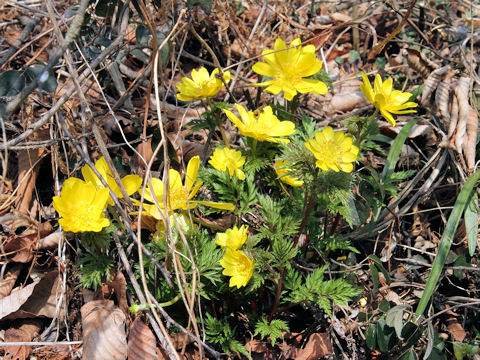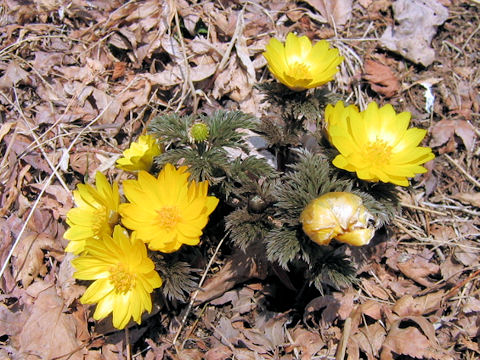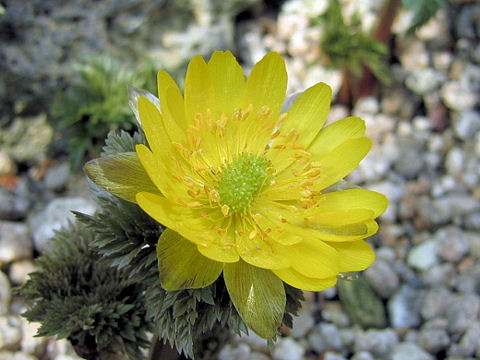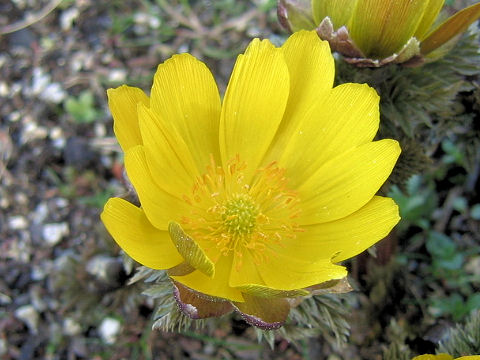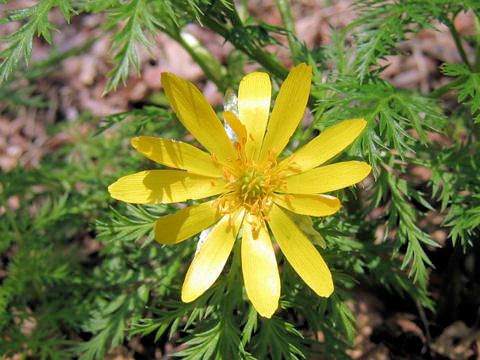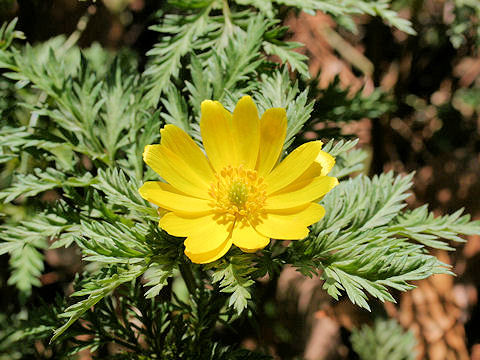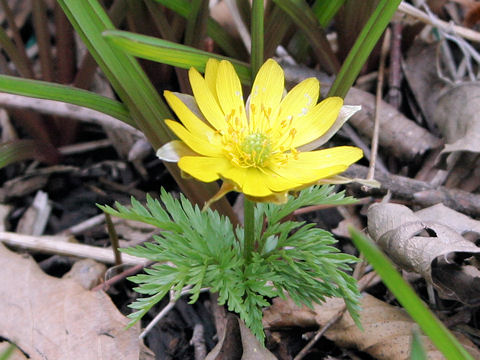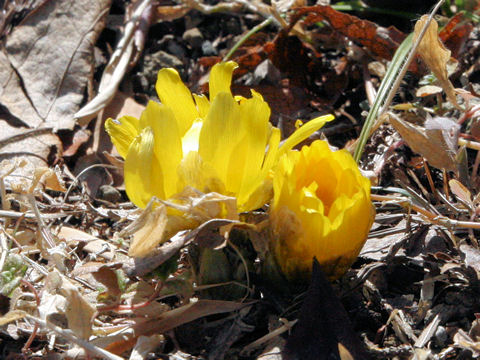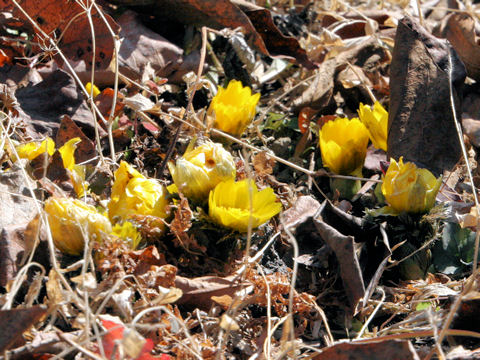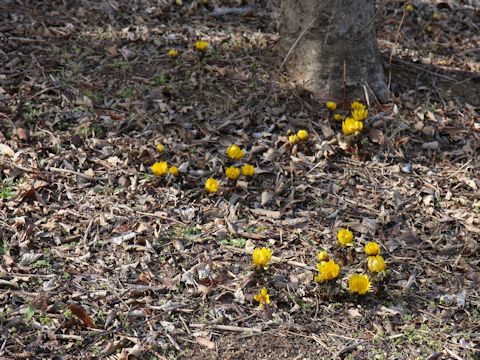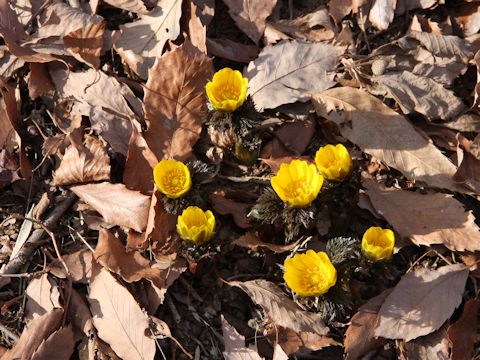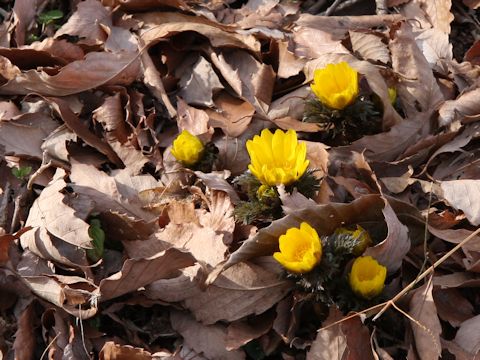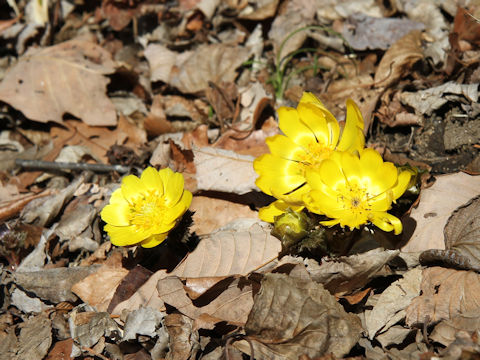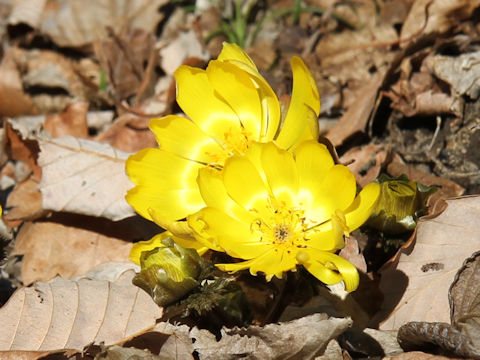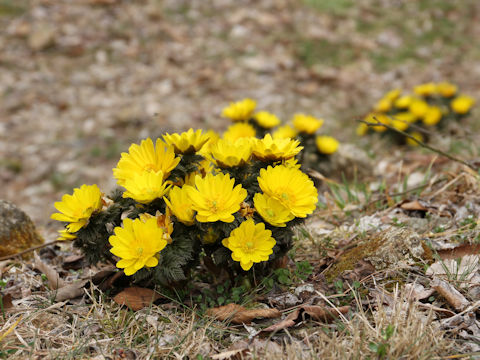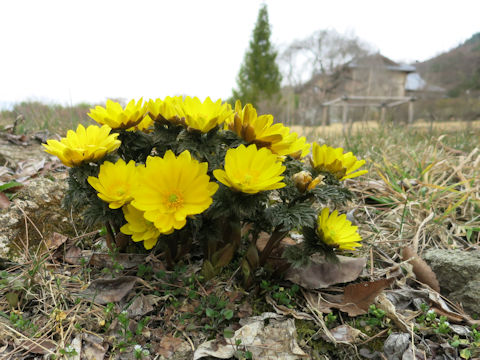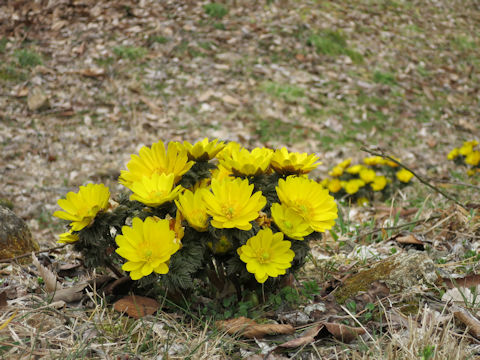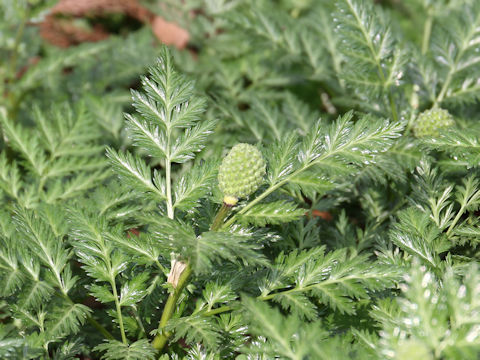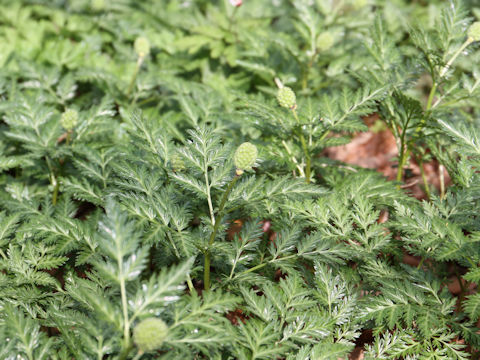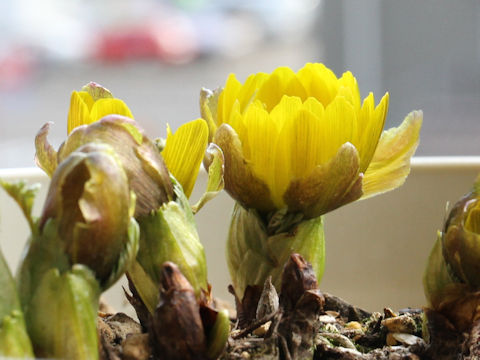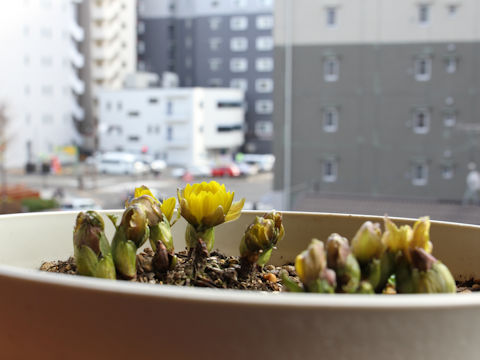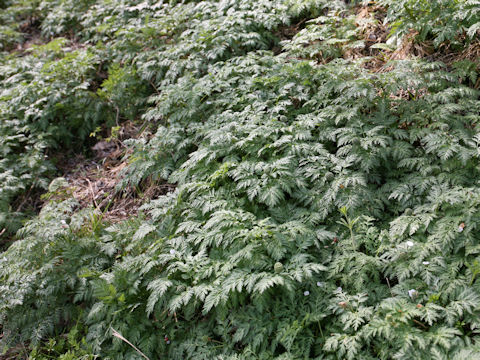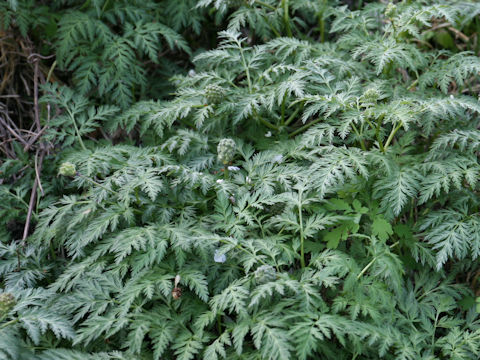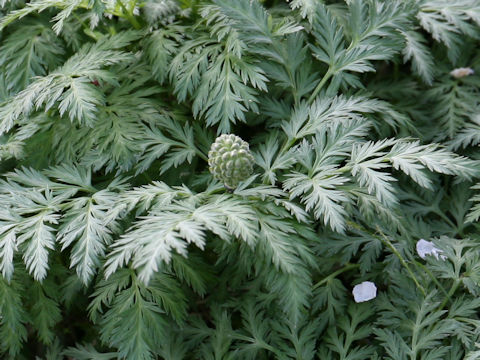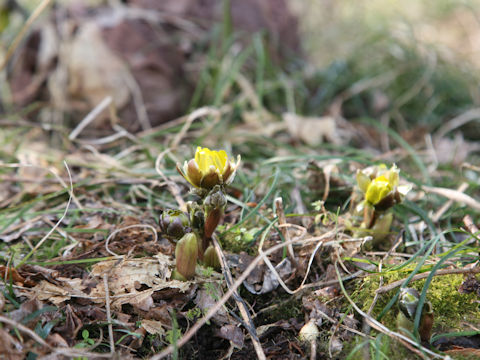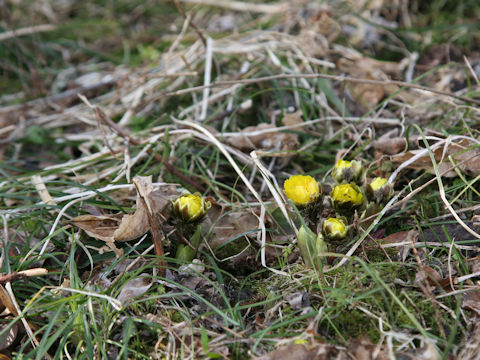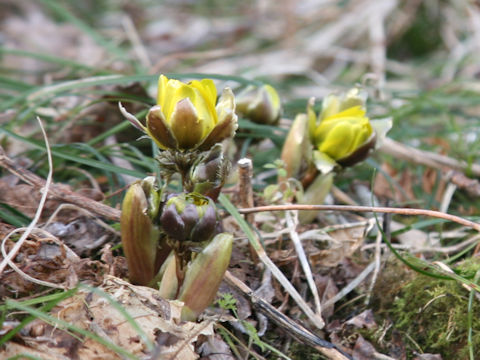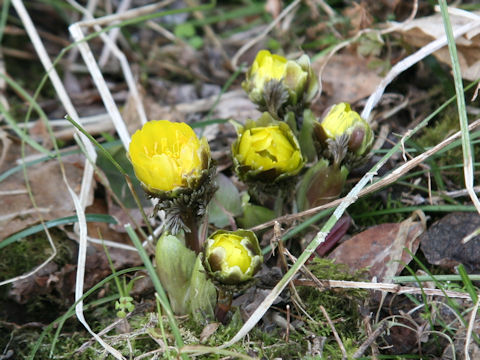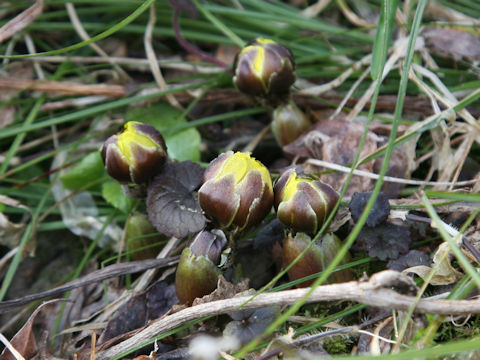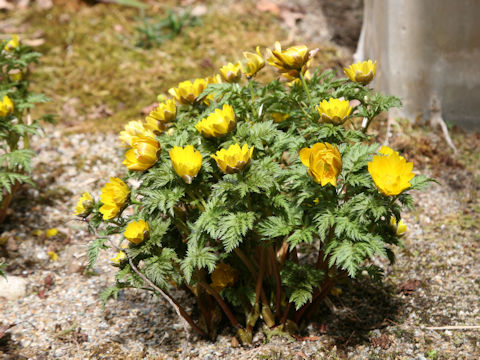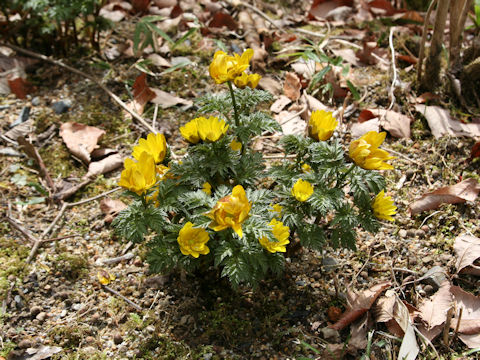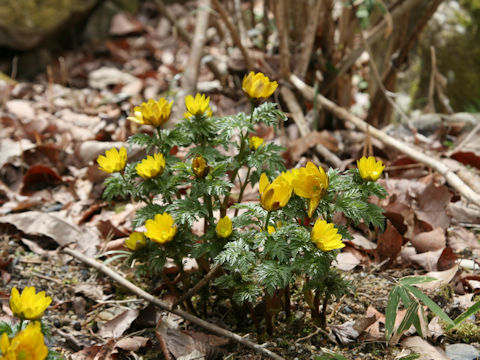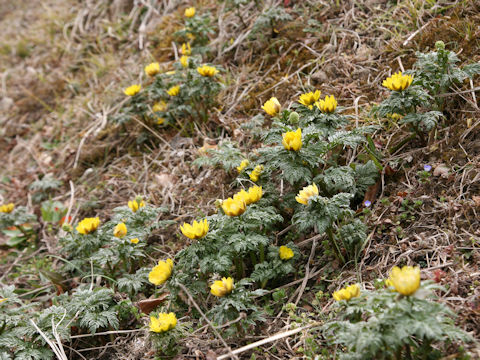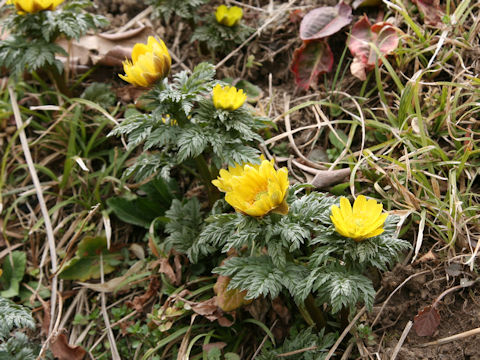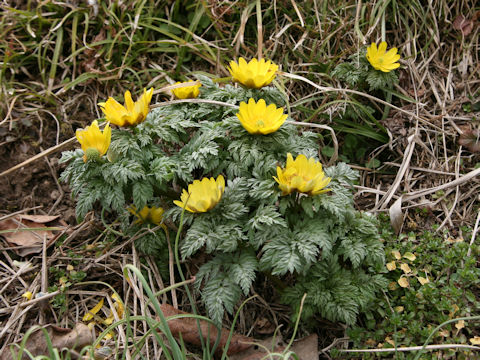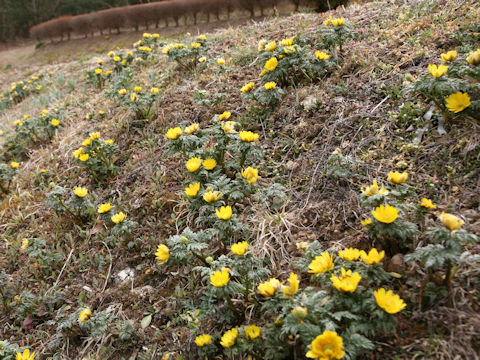
|
|
|
|
−− もっと見る(Show more)−−
−− 閉じる(Close) −−
|
|
|
|
東アジアが原産です。わが国では、北海道から九州の明るい広葉樹林に分布しています。ふつうには3月から5月ごろ、鮮やかな黄色の花を咲かせます。別名で、「がんじつそう(元日草)」とも呼ばれますが、これは旧暦のお正月(新暦では1月下旬から2月の中旬)ごろに咲くことから。6月ごろには、地上部は枯れて休眠に入ります。根は漢方薬として、強心剤や利尿目的で用いられます。最近の研究で、日本産の「ふくじゅそう」は4種あることがわかりました。本種の特徴は、萼片が花弁と同長かやや短いこと、葉の裏面に微毛がまばらに生えること、花床に微毛が生えることなどです。中国語では「遼吉側金盞花(liao ji ce jin zhan hua)」と呼ばれます。 |
|
|
キンポウゲ科フクジュソウ属の多年草で、学名は Adonis ramosa。英名は Pheasant's eye、Amur adonis。 |
|
|
The Pheasant's eye (Adonis ramosa) belongs to Ranunculaceae (the Buttercup family). It is a perennial herb that is native to East Asia. This herb is distributed from Hokkaido to Kyushu in Japan, where it occurs in open broad-leaved forests. Its bright yellow flowers bloom from March to May. The above-ground portion of the plant dies back in June. According to recent findings, Japanese Pheasant's eye actually comprises four species. Adonis ramosa is characterized by sepals that are nearly equal in length to the petals or slightly shorter, leaves that are sparingly pubescent on the underside, and pubescent receptacles. (edit by Greg Brockelbank) |
|
|
[上] 群馬県東吾妻町原田にて、2008年03月30日撮影。 [中1] 兵庫県神戸市灘区六甲山町「六甲高山植物園」にて、2004年03月09日撮影。 [中4] 同上にて、2005年04月19日撮影。 [中2] 大阪市鶴見区「咲くやこの花館」にて、2005年02月25日撮影。 [中3] 愛知県名古屋市守山区「東谷山フルーツパーク」にて、2005年02月26日撮影。 [中5] 長野県伊那市「かんてんぱぱガーデン」にて、2006年04月04日撮影。 [中6] 栃木県藤岡町「三毳山公園」にて、2008年03月29日撮影。 [中7・中8] 群馬県安中市松井田町上増田「木馬瀬自生地」にて、2009年01月24日撮影。 [中9〜中11] 茨城県石岡市「茨城県フラワーパーク」にて、 2013年02月09日撮影。 [中12・中13] 茨城県那珂市「茨城県植物園」にて、 2015年02月01日撮影。 [中14] 長野県上田市「前山寺」にて、2016年03月07日撮影。 [中15・中16] 同上にて、2016年03月07日撮影。(photo by Aya Seko) [中17・中18] 宮城県仙台市太白区「仙台市野草園」にて、2018年4月04日撮影。 [中19・中20] 宮城県仙台市宮城野区にて、2020年01月17日撮影。 [中21〜中23] 宮城県仙台市青葉区「蕃山」にて、2021年04月09日撮影。 [中24〜中28] 同上にて、2022年03月01日撮影。 [中29〜中31] 岐阜県可児市「ぎふワールドローズガーデン」にて、2022年03月20日撮影。 [中32〜34・下] 宮城県大河原町堤にて、2023年03月12日撮影。 |

|
|
Shu Suehiro |
